Basic characteristics
- Power (Strenght) - measures the physical strength of the character and endurance.
- Agility (Dexterity) - Contains several physical attributes, including coordination, agility, reaction speed, reflexes, and a sense of balance.
- Endurance (Constitution) - the character includes his physique, fitness, health and physical resistance to adversity, injury, and disease.
- Intelligence (Intelligence) - Represents the character's memory, judgment, and learning ability. Intelligence determines the number of languages \u200b\u200ba character can learn.
- Wisdom (Wisdom) - describes the combination of a character's enlightenment, prudence, cunning, willpower, common sense, and intuition.
- Charm (Charisma) - Measures a character's persuasiveness, personality attractiveness, and ability to be a leader.
additional characteristics
Skills
- Assessment - Ability to determine the actual value of a thing.
- Balance - Ability to maintain balance on slippery or inclined surfaces.
- Survival - The ability to not get lost in the wild, feed yourself by gathering, read footprints, etc.
- Cheating - Ability to mislead with words and facial expressions.
- Lasagne - Ability to climb vertical surfaces, trees and ropes.
- Concentration - Ability to fully concentrate on what you are doing in order to complete the started action to the end.
- Diplomacy - Ability to convince the interlocutor.
- Intimidation - Ability to intimidate the interlocutor with threats.
- Profession - A group of skills that allows you to earn a living by working in the chosen profession (Scribe, sailor, stone cutter, cook, etc.)
- Craft - A group of skills that allows you to create items (Sculptures, traps, potions, armor, etc.)
- Clearing traps - A skill that allows you to defuse traps.
- Picking locks - A skill that allows you to pick locks.
- Knowledge - A skill that reflects the erudition of the character (definition magic items, sometimes used in dialogues).
- Acrobatics - A skill that allows you not to provoke a free attack when moving next to the enemy.
- Sleight of hand - The ability to steal characters.
- Setting traps - A skill that allows you to set traps.
- Performance - Typical for bards. Singing / dancing / playing musical instruments ... generally presenting oneself in front of an audience
- Weapon making - A skill that allows you to create and modify weapons.
- Armor crafting - A skill that allows you to create and modify armor.
- Alchemy - A skill that allows you to create potions from a variety of reagents.
- Identifying spells - A skill that allows you to recognize the spell that the enemy is preparing.
- Compassion for animals -A skill that allows you to subjugate animals.
- Treatment The ability to provide first aid, long-term care, help with diseases and poisoning.
- Creating traps -Ability to set traps.
Skills (Feat)
- Zen archery - When shooting with a bow, instead of the Dexterity modifier, the Wisdom modifier (if higher) is used.
- Attack on the move
- Alertness - Bonus to the attentiveness of the character.
- Silent Spell - The spell can be cast silently.
- Combat Casting - If the mage casts a spell near the enemy and does it in a defensive manner, he gets +4 to his concentration roll.
- Fight with two blades (Two-Weapon Fighting) - Reduces penalties for fighting with two weapons in different hands by 2 for each hand.
- Great Fortitude - +2 to resilience saving throws.
- Rapid Shot - allows you to make one more shot (there were 3 attacks per turn, now 4), but all attacks pass with a penalty of -2
- Quicken Spell - The ability to cast one spell per round as a free action.
- Weapon Proficiency Simple - Ability to use any simple weapon: club, dagger, mace, spear, brush, staff, crossbows, sling, darts.
- Weapon Proficiency Martial - Ability to use any professional weapon: most swords and axes, halberds, flails, rapiers, bows, hammers, sabers.
- Weapon Proficiency Exotic - Initially, no class has this skill. It allows you to use strange items such as double-faced axes and swords, scythes, katanas, shurikens, kama and kukris.
- Point Blank Shot - when shooting from a distance of less than 30 feet, the shooter gets +1 to attack and +1 to damage
- Extra Turning - Allows you to use the banish undead four times a day more often.
- Iron Will - +2 to Will Saving Throws.
- Spell without gestures (Still Spell) - Allows you to conjure without gesturing.
- Toughness - +1 hit point per character level, or +3 hit point at a time.
- Improved Critical Strike - increases the radius of critical threat of weapons by 2. taken for each weapon separately.
- Armor Proficiency Light - Ability to wear light armor. Amendment: any character can wear any armor, but will suffer a -4 penalty to attack for each difference in the category of skill and armor wearable (for example, a Barbarian in heavy armor without a skill will receive a -4 penalty to attack, and a magician will not wielding armor -12, while a thief only -8). the same applies to weapons. even the deadliest mage can grab a two-handed sword and swing it with a -4 penalty to attack.
- Favorite spell (Spell Focus) - +2 to difficulty class of saving throws against your spells of a certain school.
- Favorite weapon (Weapon Focus) - +1 to attack with this weapon.
- Favorite skill (Skill Focus) - +3 to the rolls of a certain skill.
- Maximize Spell - All varying numeric effects of a spell modified by this trick are maximized.
- Lightning Reflexes - +2 to reflex saving throws.
- Disarm - Ability to knock a weapon out of the opponent's hand.
- Stunning Fist -
- Deflect Arrows - Once per round, the character can make a reflex saving throw (CT 20) to dodge an arrow.
- Mobility - Allows you to receive a +4 dodge bonus to Armor Class against attacks whenever possible, if you move past the enemy with a weapon.
- Spell Penetration - +2 to rolls to overcome magic resistance.
- Extend Spell - Doubles the duration of the spell.
- Cleave - One of the greatest combat skills: if its owner kills an enemy in battle, then he gets an additional attack against another enemy within reach.
- Knockdown - removes a -4 penalty to attack when trying to knock down
- Power Attack - Allows you to strike with a swing with +5 damage, but -5 to hit.
- Weapon Specialization - +2 to damage from certain weapons.
- Armor Proficiency Medium - Ability to wear medium armor. * edit, see light additions
- Called Shot -
- Fine Hearing - Bonus to the character's hearing when rolled accordingly.
- Armor Proficiency Heavy - Ability to wear heavy armor.
- Dodge - +1 to defense against attacks of the selected enemy.
- Improved Power Attack -
- Improved Disarm -
- Improved Parry -
- Improved Knockdown -
- Improved Unarmed Strike -
- Improved Two-Weapon Fighting -
- Empower Spell - The numerical effects of the spell (damage) are increased by one and a half times, the level of the spell is increased by 2.
- Fencing (Weapon Finesse) - Allows to use agility instead of force in melee combat.
- Shield - Allows you to use the shield.
Wikimedia Foundation. 2010.
See what "Characteristics" are in other dictionaries:
Character characteristics in Dungeons Dragons Character characteristics are a list of basic and additional parameters, as well as skills and abilities that game character... Each character in Dungeons Dragons has a set of parameters, ... ... Wikipedia
Character characteristics are a list of basic and additional parameters, as well as skills and abilities that the game character possesses. Each character in Dungeons Dragons has a set of parameters and characteristics. They are divided into ... ... Wikipedia
Character characteristics are a list of basic and additional parameters, as well as skills and abilities that the game character possesses. Each character in Dungeons Dragons has a set of parameters and characteristics. They are divided into basic and ... ... Wikipedia
Character class character archetype role-playing gamesdefining his skills and direction further development... As a rule, players choose a class when creating a character and cannot completely move away from it throughout the life of this character. ... ... Wikipedia
Characteristics of heroes
You probably often wonder how much strength you need to spend to get a nice amount of double hit, or how much dodge and critical attack will give you 75 agility (35 times think and count). Or you just want to increase your knowledge of the game and its mechanics a little. But most likely you just passed by and decided to look into this guide with a proud name - “The meaning of all character characteristics in the game Aika2”. Regardless of your motives, I wish you not to waste this time, but to benefit.
Before describing all the characteristics of the characteristics, I want to clarify the standard indicators of all explicit and hidden parameters of the character, which are the same for everyone:
Critical attack - 5
Double strike - 1
Stability - 1
Resistance to critical attacks - 1
Double Impact Resistance - 1
Evasion - 1%
Critical Damage - 140%
Average spread of damage - + -15-20%
Cutting damage by physical / magician protection - 1 to 12
Formula for calculating damage cut:
Your attack rate * ((100 - percentage of the target's items being cut from a point) / 100) - (target's defense rate * ((100 - your defense penetration rate) / 100)) / 12 - (target's damage reduction rate from nations is your damage increase by nations) * 2 \u003d your total damage to target
Example:
Your attack is 4165, the target's defense is 14924, the damage cut from items is 28.1%, the target's damage reduction is 962, your damage to nations is increased 669, your defense penetration is 37%. Total:
4165 * ((100-28.1) / 100) - (14924 * ((100-37) / 100)) / 12- (962-669) * 2 \u003d 4165 * 0.719- (14924 * 0.63) / 12-293 * 2 \u003d 2995-784-586 \u003d 1625 is your final target damage indicator.
Let's move on to describing the characteristics themselves. There are 3 profile characteristics for classes in the game (warrior and paladin - strength, shooter and pistolier - agility, magician and priestess - intelligence) and 2 auxiliary characteristics (addition and spirit). Each characteristic has its own set of parameters, which they increase, and the correct buildup of the character depends very much on the choice of the main characteristic to increase or combine them. I note right away that the profile characteristic for your class is not always the best for it. Below I will provide all the known data on characteristics and practical advice for choosing them in pumping.
Important!!! The entire counting of the parameters of characteristics begins after increasing your characteristics by +1, that is, after increasing the strength of the shooter (8 standard) to 9, you will receive + 1% crit damage, + 1% penetration of physical protection, +1 double and this 9 will become zero reference point for the parameters of the characteristic (!!!)
Power
This parameter is profile for two melee classes (melee classes) - warrior and paladin. Regardless of your class, strength gives all characters such parameters as - critical damage, penetration of physical protection and double attack, profile classes also receive physical damage in addition to all this.
- Critical Damage:
Every even crit damage is 9 strength
Every odd crit damage -10 strength
Example:
8 strength (140% crit damage) +1 strength \u003d 9 strength (141% crit damage) +10 strength \u003d 19 strength (142% crit damage) +9 strength \u003d 28 strength (143% crit damage) + ...
- Physical defense penetration:
Every 20 strength increases the target's physical defense penetration rate by 1%
8 strength (0% penetration of physical defense) +1 strength \u003d 9 strength (1% penetration of physical defense) +20 strength \u003d 29 strength (2% penetration of physical defense) + ...
- Double attack (double):
Every 20 Strength increases Double Attack by 1
8 strength (1 double) +1 strength \u003d 9 strength (2 doubles) +20 strength \u003d 29 strength (3 doubles) + ...
- Physical attack (only for warrior and paladin):
The formula for increasing physical damage from strength is not very simple and has a period of - + 3 + 3 + 2 + 3 + 3 + 2 + 3 + 2
Agility
This parameter is profile for two range classes (ranged classes) - shooter and pistolier (dg). Regardless of your class, agility gives all characters such parameters as - critical attack, accuracy, evasion, profile classes, in addition to this, also receive physical damage.
- Critical attack (crit)
Every even crit is 13 dexterity
Every odd crit is 12 dexterity
16 agility (5 crit) +1 agility \u003d 17 agility (6 crit) +12 agility \u003d 29 agility (7 crit) +13 agility \u003d 42 agility (8 crit) + ..
- Accuracy:
Every 10 dexterity increases your hit rate by 1
16 agility (200 accuracy) +1 agility \u003d 17 dexterity (201 accuracy) +10 dexterity \u003d 27 dexterity (202 accuracy) + ...
- Evasion:
Every 20 dexterity increases your dodge rate by 1
16 agility (40 evasion) +1 agility \u003d 17 agility (41 evasion) +20 dexterity \u003d 37 agility (42 evasion) + ...
With accuracy indicators<200 количество уклонения нужное для 1% уклонения = 4
With accuracy indicators\u003e 200 and<230 количество уклонения нужное для 1% уклонения = 5
With hit rates\u003e 230, the amount of evasion needed for 1% evasion \u003d 6
- Physical attack (only for shooter and pistol):
The formula for increasing physical damage from agility is not very simple and has a period of - + 3 + 3 + 2 + 3 + 3 + 2 + 3 + 2
Intelligence
This parameter is profile for two magic classes - magician and priestess. Regardless of your class, intelligence gives all characters such parameters as - reloading (reducing the rollback time of skills), breaking through magic protection (absolutely useless for physical classes), profile classes in addition to this also receive magic damage.
- Reload (cd):
Every 25 Intelligence increases Cooldown by 1%
16 intelligence (0% CD) +1 intelligence \u003d 17 intelligence (1% CD) +25 intelligence \u003d 42 intelligence (2% CD) + ...
- Penetration of magic protection:
Every 20 Intelligence increases the penetration rate of the target's defense mage by 1%
16 intelligence (0% penetration magician protection) +1 intelligence \u003d 17 intelligence (1% penetration magician protection) +20 intelligence \u003d 37 intelligence (2% penetration magician protection) + ...
- Magic attack (only for mage and priestess):
The formula for increasing magic damage from intelligence is not very simple and has a period of - + 3 + 3 + 4 + 3 + 3 + 3 + 4
Addition
It is an auxiliary characteristic for all characters and gives all classes the same parameters - protection against critical attacks, protection against double hits, XPeshechku (health).
- Resistance to critical attacks (antikrit):
Each even indicator of anticritis - 13 addition
Each odd anticritic indicator is 12 addition
10 addition (1 anticrit) +1 addition \u003d 11 addition (2 anticrites) +12 addition \u003d 23 additions (3 anticrites) +13 additions \u003d 36 additions (4 anticrites) + ..
- Double Impact Resistance (Anti-Double):
Every 20 additions increase the antidial values \u200b\u200bby 1
10 additions (1 anti-double) +1 addition \u003d 11 additions (2 anti-doubles) + 20 additions \u003d 31 additions (3 anti-doubles) + ...
- X Peshechka (health):
Each even index of addition increases HP by 28 units.
Each odd addition increases HP by 27 units.
Spirit
It is an auxiliary characteristic for all characters and gives all classes the same parameters - stability, damage from skills, Myshechka (manna).
- Resilience (dodging skills with a debuff is combined with simple dodging):
Every even indicator of resilience is 11 spirit
Each odd resilience score is 10 spirit
10 spirit (1 resilience) +1 spirit \u003d 11 spirit (2 resilience) +10 spirit \u003d 21 spirit (3 resilience) +11 spirit \u003d 32 spirits (4 resilience) + ...
With accuracy indicators<200 количество устойчивости нужное для 1% уклонения = 4
With accuracy indicators\u003e 200 and<230 количество устойчивости нужное для 1% уклонения = 5
With hit rates\u003e 230, the amount of resistance needed for 1% evasion \u003d 6
- Damage from skills (increases the rate of damage from skills):
For skills with activation time<1 секунды - 35% урона от навыков
For skills with activation time\u003e 1 and<2 секунд - 65% урона от навыков
For skills with activation time\u003e 2 seconds - 100% damage from skills
The formula for increasing skill damage from spirit is not very simple and has a period of - + 5 + 5 + 6 + 5 + 5 + 5 + 6
- Meatball (manna):
Each even indicator of spirit increases MP by 28 units
Each odd spirit indicator increases MP by 27 units
Congratulations, now you know all the necessary and unnecessary performance parameters in Aika2. And you may think: "What to do next?" And then long and tedious calculations with a notepad and pen will await you in order to distribute all the characteristics available to you in the most profitable way and get maximum amount the parameter increases you need. In conclusion, I can suggest that the only correct stat for priestesses is addition, for DG - agility. And then the most interesting thing begins: the arrows, depending on their preferences (those are still perverts), can give preference to dexterity, strength or intelligence (and no, this is not a mistake), a var should sit on a stump and think carefully about choosing strength or dexterity (you can throw coin), the magician should stuff the tidbits into the pipe and, stroking his beard, slowly ponder the choice between intelligence, dexterity, or spirit, but paladins are simply hopeless and nothing will help them, but if you really want to, you can try addition, agility or strength.
I advise everyone not to be too lazy, but to think over the number of points thrown into one or another characteristic and you will have game happiness, albeit small.
Important!
- Remember, this guide can help you develop your character, but do not forget that everyone has their own style of play, so, nevertheless, it is worth trying other options for the build, accessories and armor, depending on how you prefer to play.
- The guide was created according to the player's tests, so the actual parameters may differ from those described in the guide.
The guide was created by the player IrIrr (Twink # 137)
Character profile is detailed description life and personality of a fictional character. A good character profile helps authors get into his mind and bring it to life for readers. If you're writing a story, all of your main characters should have their own profiles. Start with the basics. Determine the age, appearance, job, social status and mannerisms of your character. Then develop his personality traits and backstory. Finally, develop the character's place in the story and the struggles he will wage throughout the story. Having dealt with all these points, you will be able to register characters who seem to be real people for readers.
Steps
Part 1
Imagine appearance hero-
Start with a simple sentence describing the character. Many writers start with a very brief character description before creating a full profile. They usually describe distinctive features hero and set the tone for his role in the story. Before making a detailed plan, imagine how you can introduce the character into the story and what information you want to convey to the audience about him. Write it down in a short sentence to get started.
- After writing the introduction, use all the details provided to develop the character's backstory and personality.
- You can imagine the character like this: "Tired and looking older than his years." It's a great starting point because it provides a lot of opportunities to dive into the character's backstory. Think about why he looks older than his years and what life difficulties have drained him so much.
-
Write down the basic statistics of the character's life. it general information about the hero, which will help you create a more detailed profile of his personality. Basic information includes age, birthday, current place of residence and job.
- Then use the background information to go into details. Once you've decided on a character's job, think about their income. What social class does he belong to?
- You don't have to complete every aspect of a character's life. It's more of an exercise to turn on the imagination and place yourself in the head of a given character.
-
Imagine the character's appearance. Physical descriptions are important for the protagonists. Perhaps you already had an image of the character in your head before you started writing the questionnaire, or you will have to develop it. Either way, make a plan for the character's appearance and how you describe him in the story. Going forward, think about the role of appearance in the character's personality.
- Start with the most basic information, such as hair / eye color and clothing that the character usually wears. Does he have a beard? Does he have natural hair color or is his hair dyed?
- Then delve into the details of the exterior. Is your character groomed or slightly unkempt? Think about what a well-groomed person might be hiding or what difficulties a sloppy person might have.
- Also determine if the character has any distinguishing traits or characteristics. For example, a scar on a face can tell a whole story about a character and how he got this injury.
-
Develop your character's manners. Once the physical description is ready, delve deeper into the character's profile, imagining how he will behave in everyday life. Developing mannerisms, such as how to speak, will help you to truly visualize the character so that the audience can feel more connected to him.
- Think about how your character enters the room. Decide if he is the type of person who will confidently enter the room and introduce himself to everyone present, or if he is trying to sneak in unnoticed and stay out of sight.
- Imagine the character's manner of speaking. Does he have an accent? Does he use a lot of big words to sound smart? Does he stutter?
- Determine if the character has other traits or habits. He may blink a lot when he lies. This can be a plot component in the story later.
-
Give a name to the character. Depending on your preference, the character's name can be both extremely important and secondary. If you like to put a lot of symbolism into names, then take some time and think about what you think should be behind the name of the hero. Otherwise, focus more on the character description and choose whatever name comes to your mind.
- If there is no symbolic meaning in the character's name, do not spend a lot of effort and energy to come up with a big name. Focus more on the description so that your readers feel connected to the character.
- If you don't care too much about the character's name, use the online random name generator.
- However, it is very important to give the characters different and inconsistent names. For example, having John, Jack and Joe will confuse readers. But the names John, Armando and Scott are much easier to distinguish and remember.
- Think about any nicknames the character has and in which situations the different names will be used. For example, if everyone calls a character Joe, but during an argument, the wife calls him Joseph, this can automatically tell readers that she is angry with him.
Part 2
Describe the character's backstory-
Select your character's hometown. If in the story he does not live in his hometown, think of where he comes from. If the story takes place in New York, but the character was born in Atlanta, explain what he is doing in New York. Complete the rest of the questionnaire using this information.
- Determine how long the character has lived in his hometown and if he has a local accent.
- Think about why the character left his hometown. Did he just move to work, or did he get along with his family? Does he miss his hometown, or was he happy to leave?
-
Think about the character's childhood. The backstory of the hero is usually very important to his general characteristics... If the character is an adult, think about what his childhood was like. Use this information to determine if he will consider his life to be successful or not.
- Develop as many details as possible about the character's childhood. Try to imagine it best friend, school, favorite teacher, hobbies, career goals, and favorite food.
- Describe any trauma the character suffered as a child. Perhaps this is why he left his hometown or why it became difficult for him to make friends in the future.
- Perhaps the character was spoiled as a child and never faced difficulties. This is also an important aspect for his personality.
-
Map the character's personal relationships. How a character interacts with other people is critical to his role in the story. Decide whether he is kind, caring, or manipulative? Finding out how a character relates to other heroes will help you plan the rest of his evolution.
- Start with the character's simple personal relationships. Make a list of his parents, siblings, and other close family members. Decide if the hero is married or has no partner.
- Then think more deeply about what lies behind that personal relationship. Choose who the character will turn to if he needs help, or from whom he asks for money during a difficult period.
- Does this character make friends easily or does he just have many acquaintances? If the latter, explain why he is having trouble connecting with people.
-
Create a psychological profile for the character. Describing the appearance and personality will help to look deeper into the soul of the character. Cultivate his hopes, dreams, fears, likes and dislikes. Consider how this psychological profile will influence his actions throughout history.
- Ask a broad question such as "Is the character happy?" If so, consider if anything will happen in history that ruins his happiness. Or, if he begins to feel unhappy, identify what in his past prevents him from enjoying life.
- Then do more work on how the character reacts to the environment, as well as why he is angry or sad.
- Will the character consider himself a successful person or will he say that he is a failure?
Instructions
Characteristics of heroes can be of two types: individual and comparative. If you need to create an individual characterization of the hero, start by describing the historical era about which in question in the work. This is important because it helps explain many of the hero's actions. Tell us about the social status of the hero. Describe the environment in which he was brought up and in which his character was formed. For example, Eugene Onegin grew up in a secular society, which influenced his character, lifestyle, attitude towards women. You know that he is bored with social life, bored with beauties from high society, empty. Therefore, he was carried away by Tatyana Larina, so unlike them.
Describe in detail in the characterization of the hero, clothes, appearance, demeanor. Usually manners or some unusual features in the hero's appearance are a means of revealing character. For example, Mikhail Yurievich Lermontov in "Hero" emphasizes contradictions in Pechorin's appearance: a slender, slender figure and broad shoulders, which proved a strong build. This helps us understand the actions of the hero, which are also contradictory and ambiguous.
The actions of the hero, of course, must be described in the characteristics. For example, Pechorin shuddered during the noise of the shutters, but was not afraid to hunt a wild boar. The peculiarities of the hero's speech are an important component of the character's characteristics. So, the kindly sentimental attitude of Manilov, the hero of Nikolai Vasilyevich Gogol's work "Dead Souls", is revealed in his speech: "I would gladly give half of my entire fortune in order to have part of the merits that you have."
When composing a characterization of the hero, pay attention to the character's worldview, the circle of his interests. For example, Pierre Bezukhov in the novel by Leo Nikolaevich Tolstoy "War and Peace" is a person seeking his own path in life. The author describes his searches and mental crises. Pierre goes from being carried away by the ideas of Napoleon to the realization that the people are the driving force of history. Pierre's image is shown in development. If you are characterizing this hero, be sure to describe his search for a life path.
You can also note the attitude of the author to his hero, if this is seen in the work. For example, if you are characterizing Tatyana Larina, the heroine of Pushkin's novel "Eugene Onegin", note the kind, sincere, careful attitude of the author to her. "Tatiana, dear Tatiana ..." - writes A.S. Pushkin.
Comparative characterization allows us to understand the hero through comparison. For example, it is necessary to characterize Zhilin, the hero of Leo Tolstoy's work "Prisoner of the Caucasus," through comparison with another hero, Kostylin. This will allow you to more deeply comprehend the actions of the hero and reflect in the characteristics. At the conclusion of the characteristics, you can write your attitude towards the hero.
This should also include all scars and body features. Each scar, large or small, has its own story and the character's reaction to the story, positively or negatively, with irony or nastalgia. The same is with the features of the body, a large volume of lungs - runs longer, more convolutions of the brain - smarter, there is no finger on the right hand - perhaps he is clumsy;)
- We give a name
Eh, a very important point in my opinion, but at the same time, logic recedes into the background if you want to call your hero some cool name and do not care if the name also affects a person's life.
Let's put ourselves under a common sense and define ourselves as follows: if actions take place in our world and in our time, then you go into the directory and choose a name in accordance with your character; if in our world, but in the past, you give names in accordance with that era and place, it is possible without character, but with meaning; if the action unfolds in a fantasy or fantasy world, then here you already have complete freedom of choice.
If you have gags with coming up with a name, then various geographical, astrological, biological and other reference books will provide good help - you open them, find an alphabetical index and convert the names of places, terms and phenomena into the names of your heroes.
- The history of life
And my favorite part of creating a character is combining all of the above and creating a complete personality out of it.
The story, or the biography of the character, is that "lubricant" that will allow you to link some character traits with others and make the hero of your story "revive". In the biography, it is also worth mentioning the parents and how they influenced the character, their personal qualities, something our object could adopt from them, refuse something, they could force him to do something, how they pampered, how they were punished. .d.
If there is any unique habit or feature in the behavior of your character, it's time to describe the history of its occurrence here, and make it as vivid and memorable as possible for the character.
In general, having the features described in detail from the previous paragraphs, you are ready to create a “living” and unique personality, which has no analogues yet. You can conduct a small test, do everything described above for the character, then take one of your friends and follow the same steps, and then let them compare with friends and say that one of them was invented by you, and the other is a real person. So let them think who is who, and you will check how much real hero you have created.
P.S. Guys, listen, who knows, I'm in my twenties and I heard that at this time, if you have scaleosis, you can correct the posture of the figs. But found here "Corrector" and there was a desire to buy. When I run, my back hurts terribly - I need to fix it. Has anyone tried these proofreaders? I just want to take it, and I will, but I am interested in the successful experience of my readers, who tried it? \u003d)
For today, everyone, all creative mood friends!

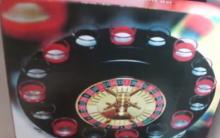
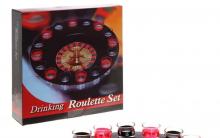
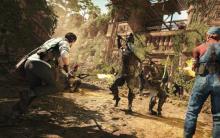
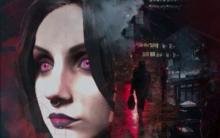
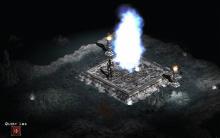
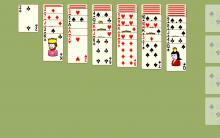




How to play wet chicken correctly
Poker rules for beginners with pictures
Elsa and anna from a cold heart games
Watch the Game Walkthrough l a Walkthrough L
We paint and dress a doll or a pony